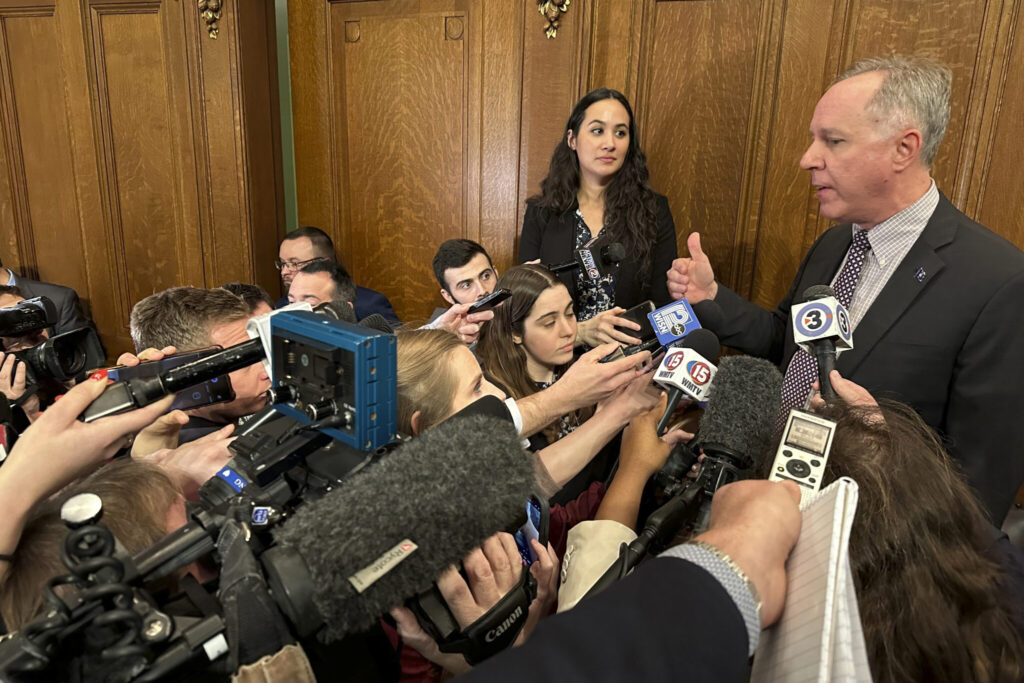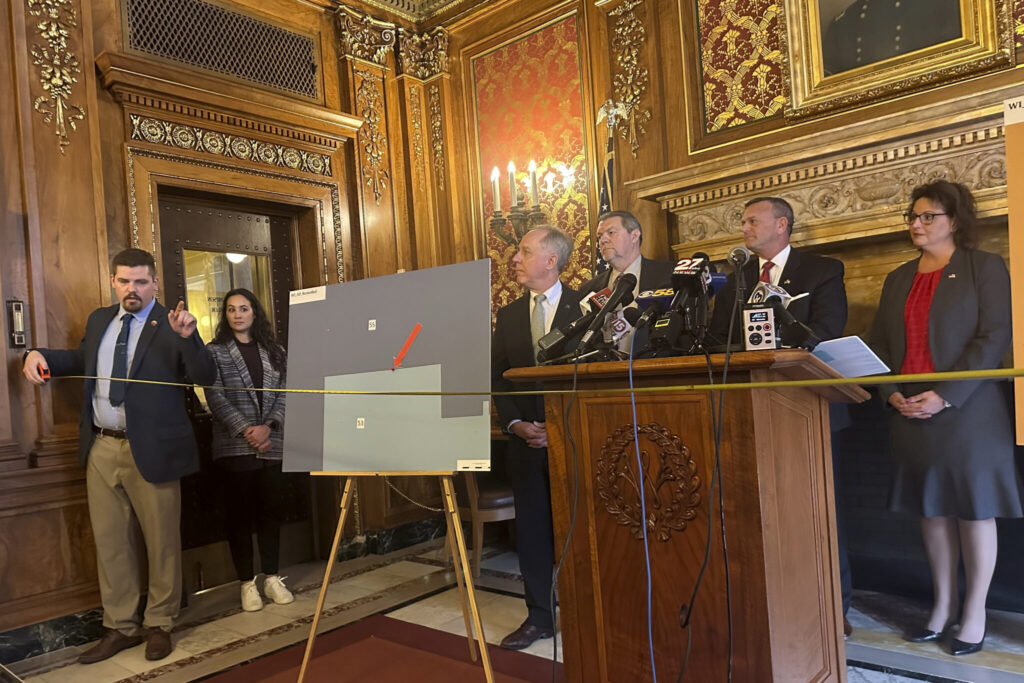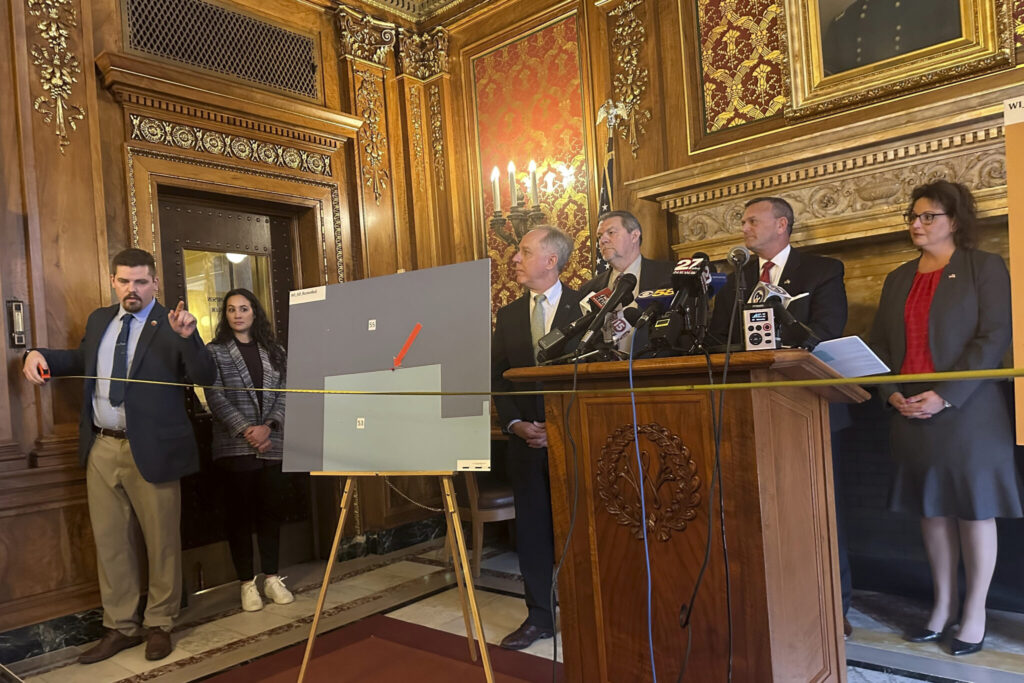The Republican-controlled Wisconsin Assembly sent Democratic Gov. Tony Evers a redistricting proposal on Wednesday that largely adopts maps he proposed, but with changes that would reduce the number of GOP incumbents who would have to face one another in November.
Quick Read
Wisconsin Redistricting Proposal: Key Points
- Republican Assembly’s Action: The Republican-controlled Wisconsin Assembly sent a redistricting proposal to Democratic Governor Tony Evers, slightly altering maps he proposed, mainly to reduce competition among GOP incumbents in November elections.
- Likely Veto from Governor Evers: Governor Evers is expected to veto the plan, which would then shift the responsibility for establishing new state maps to the Wisconsin Supreme Court.
- Supreme Court’s Involvement: The state Supreme Court, which leans liberal, previously declared the current Republican-drawn maps unconstitutional and is ready to draw new maps unless the Legislature and Evers reach an agreement.
- High Political Stakes: The redistricting holds significant implications in Wisconsin, a key presidential battleground state. Republicans have maintained legislative control since 2011, despite Democratic victories in statewide elections.
- Republican Strategy: Assembly Speaker Robin Vos initially supported maintaining current district lines but later defended the Senate’s adjustments to Evers’ map, aiming for “slightly more fair” representation.
- Democratic Criticism: Democratic leaders like Greta Neubauer criticize the Republican plan as a tactic to preserve their legislative majority and accuse them of gerrymandering to protect incumbents.
- Evers’ Stance on Modifications: Evers’ spokesperson, Britt Cudaback, has stated that any deviation from the governor’s exact proposal means the maps are no longer his.
- Lack of Engagement with Republicans: Governor Evers did not actively engage with Republicans’ efforts to approve a map that might gain his approval.
- Republican Claim of Compromise: Speaker Vos claims the modified maps meet 99% of what Democrats asked for, accusing them of gerrymandering.
- Republican Lawmakers’ Concerns: GOP lawmakers, like State Rep. Nate Gustafson, expressed their issues with being redrawn out of their districts under the Evers map.
- Assembly Vote Outcome: The proposal passed in the Assembly with a 63-35 vote, with all Republicans in favor and Democrats opposed.
- Deadline Pressure: The Legislature expedited the map approval process to meet the Supreme Court’s February 1 deadline for submitting new boundary line recommendations.
- Supermajority Status: The Republicans currently hold a supermajority in the Senate and a strong majority in the Assembly, largely due to districts drawn in 2011.
- Impact of Evers Map on Republican Majority: According to an analysis, the Evers map would reduce the Republican majority in the Assembly and Senate, but still keep them in control.
- Other Maps Under Consideration: The Supreme Court is reviewing multiple maps, including those submitted by Evers, Republicans, Democrats, and others, potentially favoring the Democrats.
- National Context: The Wisconsin case is part of broader national litigation involving U.S. House and state legislative districts following the 2020 census. National Democrats have also requested the Wisconsin Supreme Court to review the state’s congressional districts.
The Associated Press has the story:
Wisconsin Republicans send last-ditch redistricting plan to Dem. Gov.
Newslooks- MADISON, Wis. (AP) —
The Republican-controlled Wisconsin Assembly sent Democratic Gov. Tony Evers a redistricting proposal on Wednesday that largely adopts maps he proposed, but with changes that would reduce the number of GOP incumbents who would have to face one another in November.
Evers is all-but certain to veto the plan, which would then leave it to the Wisconsin Supreme Court to install the state’s new maps.
The liberal-controlled state Supreme Court last month tossed the current Republican-drawn maps as unconstitutional. The court said it would draw new maps unless the Legislature and Evers agreed to ones first.
The political stakes are huge for both sides in the presidential battleground state, where Republicans have had a firm grip on the Legislature since 2011 even as Democrats have won statewide elections, including for governor in 2018 and 2022.

Republican Assembly Speaker Robin Vos, who has long argued for keeping the current lines the same, said Tuesday night that he would happily pass maps proposed by Evers. But on Wednesday, Vos defended passing the same maps the Senate did on Tuesday, which make some changes to the Evers map.
“We’re trying to make the map slightly a little bit more fair,” Vos said.
Democratic Minority Leader Greta Neubauer said Republicans were simply trying to hold onto their majority.
“Drawing a map to protect incumbents is wrong, and it’s not what the people of Wisconsin want from their elected officials,” she said.
Evers’ spokesperson, Britt Cudaback, said Tuesday that if the Legislature adopts anything other than exactly what Evers proposed, “then they aren’t the governor’s maps. Period.”
When asked Wednesday if Evers would veto the bill as expected, Cudaback referred to her earlier comments.
Evers did not engage with Republicans on their last-ditch effort to approve a map that might get his signature.

Vos on Wednesday showed The Associated Press text messages he had with Evers on Tuesday, asking the governor to talk. Evers texted Vos back that it didn’t look promising. Vos said he was reaching out again on Wednesday and speaking with Assembly Democrats.
Vos said at a news conference that Evers would not work with them on it. But he said the maps were so close to what Evers proposed, Democrats should get behind them.
“We have met them 99% of the way on the maps that they asked for,” Vos said. “What we’re actually doing is making miniscule changes to gerrymandered Evers maps.”
Vos said Republicans were not trying to get around the court ordering a map, but that the Legislature was instead doing its job to pass a plan.
“We are not trying to circumvent anything,” Vos said.
Republican lawmakers who would be drawn out of their current districts under the Evers map pleaded their case at the news conference. State Rep. Nate Gustafson, of Fox Crossing, held a tape measure extended to 15 feet.
“This is how far they drew me out of the 55th,” Gustafson said.
He and the others said they intended to run for reelection in their new districts if those are the maps adopted.
Vos said under the Evers maps, 30 Republicans would be paired against one another compared with just two Democrats.
“The surgical nature that was done on these districts was certainly done to accommodate Democrat candidates,” Vos said.
The Assembly passed it 63-35, with all Republicans in support and Democrats against.
The Legislature raced to pass maps ahead of the Feb. 1 deadline for consultants hired by the Wisconsin Supreme Court to submit their recommendations for new boundary lines. They were reviewing six maps submitted separately by Evers, Republicans, Democrats and others. They could recommend one of those maps, or their own. It would then be up to the liberal-controlled court to order the maps, unless the Legislature and Evers can agree first.
Republicans have a 22-11 supermajority in the Senate and a 64-35 majority in the Assembly, two seats shy of a supermajority. They have built their majorities under maps they first drew in 2011.
Under the Evers map, Republicans would have a 53-46 majority in the Assembly, and a 17-16 edge in the Senate, based on an analysis by Marquette University Law School research fellow John D. Johnson. His analysis used a statistical model to predict the results of the 2022 state legislative election had they taken place in the newly proposed districts.
Democrats would fare better under other submitted maps the court is considering, which is fueling the Republican push to adopt the Evers maps.
The legislative machinations in Wisconsin come as litigation is ongoing in more than dozen states over U.S. House and state legislative districts that were enacted after the 2020 census. National Democrats last week asked the Wisconsin Supreme Court to take up a challenge to the state’s congressional districts, but the court has yet to decide whether to take the case.







